The Article
110LP v2 Phono Amplifier From Moon
19th April 2019
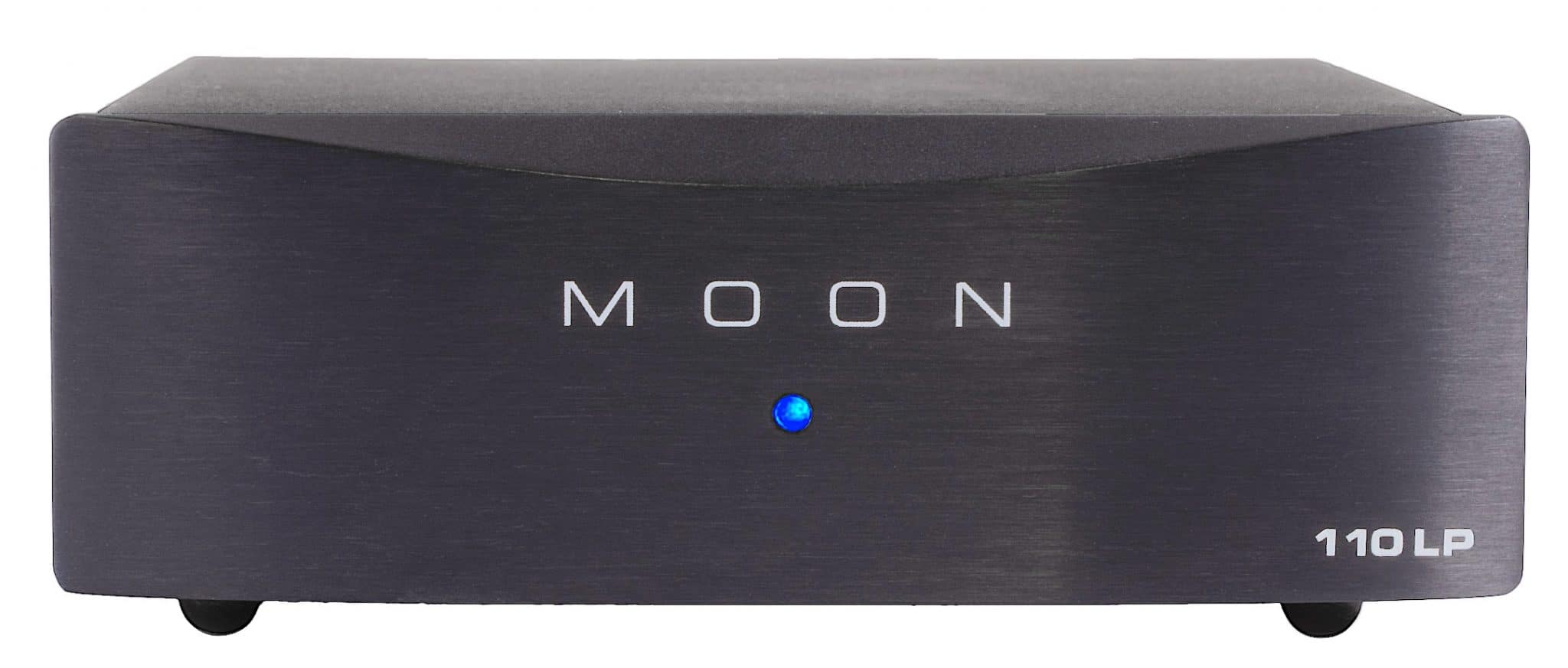
Compact and dinky it might be but Moon says that this little phono amplifier can punch above its weight (and size). Paul Rigby reviews the 110LP v2
Allow me to throw you a few stats to give you an idea of what you’re dealing with here. This is a little box spanning 127 x 42 x 165mm and weighing in at around 1.5kg. So this little phono amplifier is just the thing if you’re short on space. It’s also demure and shy in its general appearance. This low profile look will again appeal to many who don’t like their hi-fi to parade in front of them. Some hi-fi kit does a veritable calypso while wearing head feathers and a rainbow skirt. Not the 110. Low key. Low vis. Low height. Thats the Moon 110LP v2.
When you are matching your cartridge with this phono amplifier, you’ll be faced with banks of DIP switches underneath (see image below). Now look, I’ll tell you straight that I dislike DIP switches intensely. They are finicky, confusing and easy to configure incorrectly. That said, you are given a nice little pen-type piece of plastic called a DIPStick from Grayhill which assists with the switch moving and, in sonic terms at this price, DIP switching is best system available. Other solutions will either degrade the sound performance or demand a dramatic price hike. So, like me, you’re lumbered. The settings themselves are not too puzzling, to be honest but I found that I wasn’t sure – at least initially – where the switch was. The well lit image below, oddly enough, looks rather clearer than real life. Maybe when shadows loom in those recessed DIP switch pits then… That is, at first glance, it was tough to know where a switch was sitting: on the left or right. I got the hang of that pretty soon but I can imagine someone pushing to breaking point a DIP switch to the right which is already to the right because it looks like its on the left! Phew! If you catch my drift. Just don’t push too hard, the switches are not hard to move. If you’re pushing a switch to the right and it just won’t shift, it’s probably already there.
Those settings include impedance (i.e. 47kΩ, 475Ω,100Ω, 10Ω), capacitance loading (i.e. 0pF, 100pF,330pF, 430pF), gain (40dB, 50dB, 54dB, 60dB, 66dB) and a user selectable curve (IEC/RIAA).
The wall wart-powered aluminium chassis includes four-layer PCB tracings using pure copper and inductive DC filtering. It also features a socket for the 24V switch mode power supply, arrives in any colour you want as long as its black and comes with a 10-year warranty.
SOUND QUALITY
I began with a vinyl version of Nancy Wilson’s You’ve Got Your Troubles from the original Capitol/EMI pressing of A Touch of Today (1966). This album features a measure of compression so, while there’s plenty of detail on offer, the upper mids are pushed to the edge. This means that any hi-fi product that’s not perfectly neutral will push this recording into the bright zone and you’ll know about it pretty pronto.
As for the 110LP v2 in action? This box is as neutral as I’ve heard in a while from a relatively low cost phono amp. There was no hint of the 110 forcing the issue within the upper mid or treble zones. Instead, the Moon took its foot off the pedal and let the music do its thing.
Upper mids were not only balanced in terms of presentation, the low noise from the unit meant that the midrange was able to rope in more detail than I would have expected at this price point.
What I mean is that the reduction in noise increased the 3D effect of the soundstage so the music seemed to push backwards towards the rear wall of my listening room. As the soundstage moved backwards, the new space wasn’t just heard as an empty void, of course, it was filled by new detail. So, on one channel, a quite frantic acoustic guitar strum added finesse and delicacy to the sound of the strings. With some phono amps, that acoustic guitar could sound restricted and a little forced.
Let me elaborate. Imagine standing in a room, looking through a window and seeing a face on the other side squashed against the glass. Now, as you stare in horror and before you reach for your phone to call the Police, observe that face. Apart from the bent nose, the cheeks are flattened, the eyes look a little scary and the lips will be distorted. That’s the equivalent effect that some phono amps can produce if all they offer is a flat 2D soundstage.
The 110LP v2 gives, in effect, more room for details to manifest themselves. So, you’re back in your room with this odd looking person on the other side of the glass? Imagine that they slowly move backwards, the lips detach from the glass, the nose unbends, the eyes blink and the face slowly emerges, offers form, structure, new depth, more detail can be seen, new subtle aspects of the cheek bones are visible for the first time and, hey, they actually look quite attractive. I wonder if they’re free for dinner tonight…?
But enough shenanigans. Do you see how a 3D soundstage is actually important when appreciating delicate details?
I changed the music to a more dynamic and bass heavy master from rock outfit T2 and It’ll All Work Out in Boomland and the track, Morning. Again, the result was a balanced output with bass offering a wealth of information, transient detail, reverb response and more but doing it within the confines of the mix without booming and dominating or affecting the midrange. During the early part of this track I was impressed, during a high energy, rather noisy part of the sound, how the drums were kicking up a storm, the guitar was a beast of noise and yet the delicate cymbal taps were clearly evident with enough space in and around to offer their own reverb tails. The sense of order and discipline was high yet the naturalistic flow of the music was also important here. The detail on offer never appeared forced or false and plastic in any way.
CONCLUSION
The best compliment I can offer the Moon 110LP v2 is that I often found my attention drifting away from the review in hand and becoming lost in the music. Which is why this review took twice as long as it should have. Ten minutes would go by and then I’d suddenly click back into work mode, realising that I should be making notes at this point. The 110 is thus an involving piece of kit and one that integrates easily and efficiently into any balanced hi-fi system. Tonally, it is very impressive indeed with an organic clarity that is mightily impressive at this price point.
If you’re building a top-end budget analogue system and have a To Do shopping list? You don’t have to look to the heavens for guidance on the phono amplifier selection, just the Moon.
MOON 110 PHONO AMPLIFIER Price: £399 Tel: 0131 555 3922 Website: www.simaudio.com
GOOD: tonal balance, neutral presentation, midrange clarity, disciplined bass, value for money
BAD: nothing
RATING: 9
Don’t forget to check out my Facebook Group, The Audiophile Man: Hi-Fi & Music here: www.facebook.com/groups/theaudiophileman for exclusive postings, exclusive editorial and more!]
REFERENCE
Pro-Ject RPM3 turntable
Spendor A1 speakers
Black Rhodium cables
Blue Horizon Professional Rack System
Harmonic Resolution Systems Noise Reduction Components
All vinyl was cleaned using an Audio Desk’s Ultrasonic Pro Vinyl Cleaner

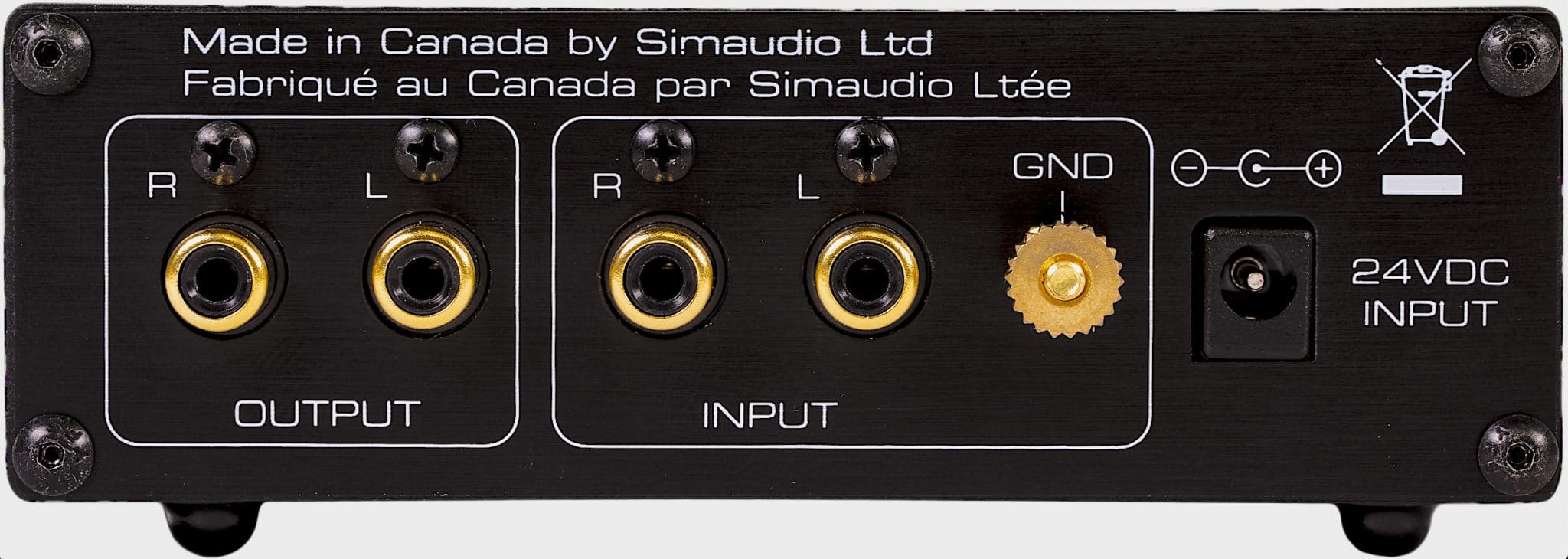
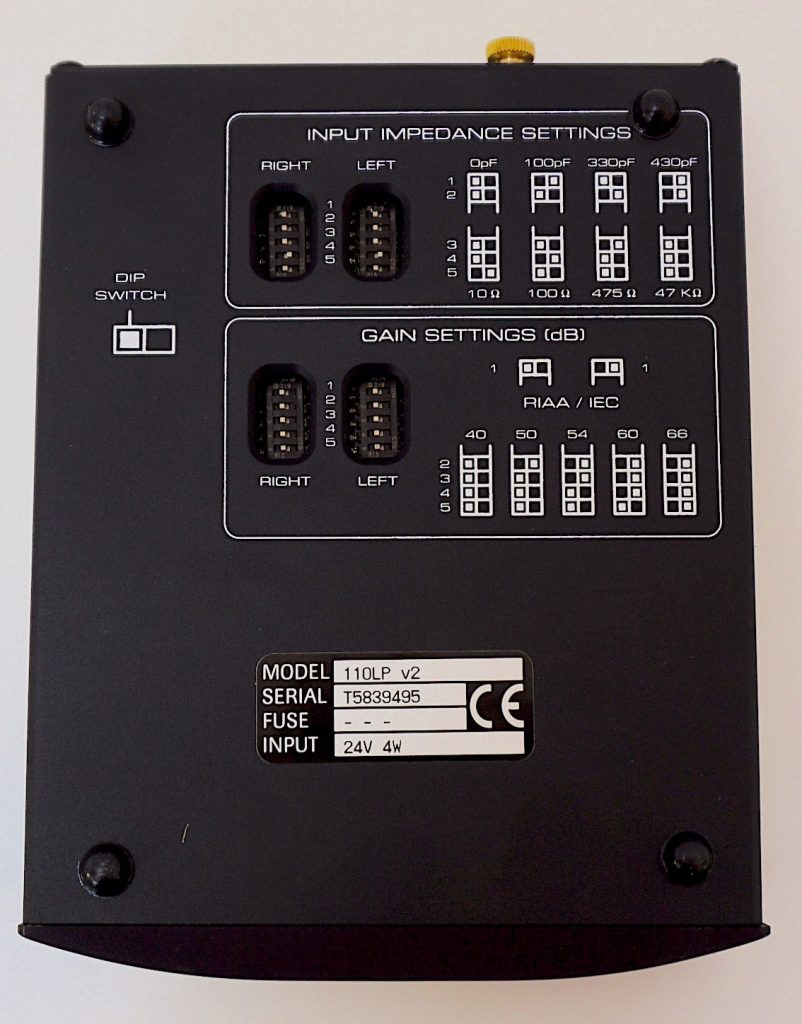
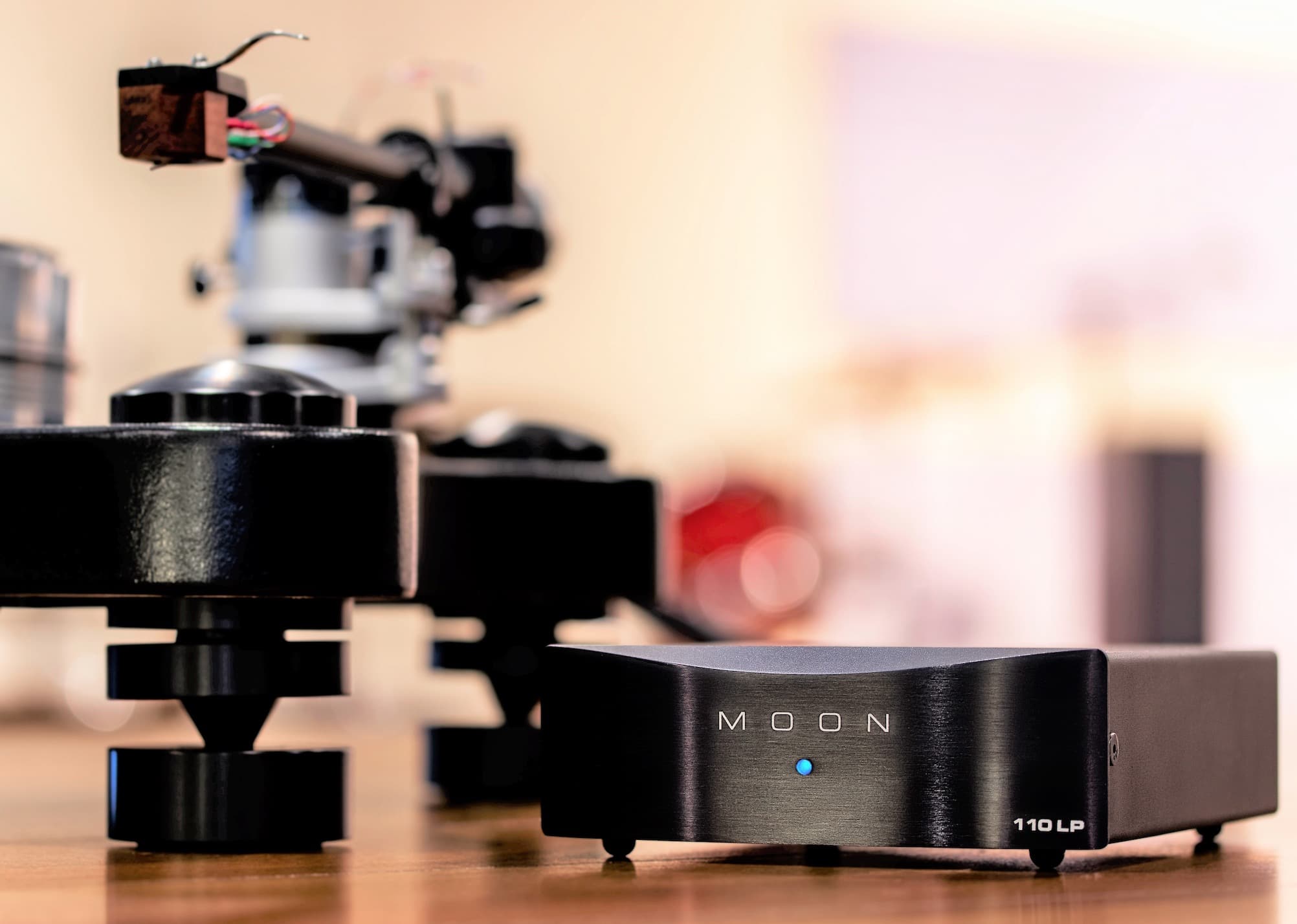
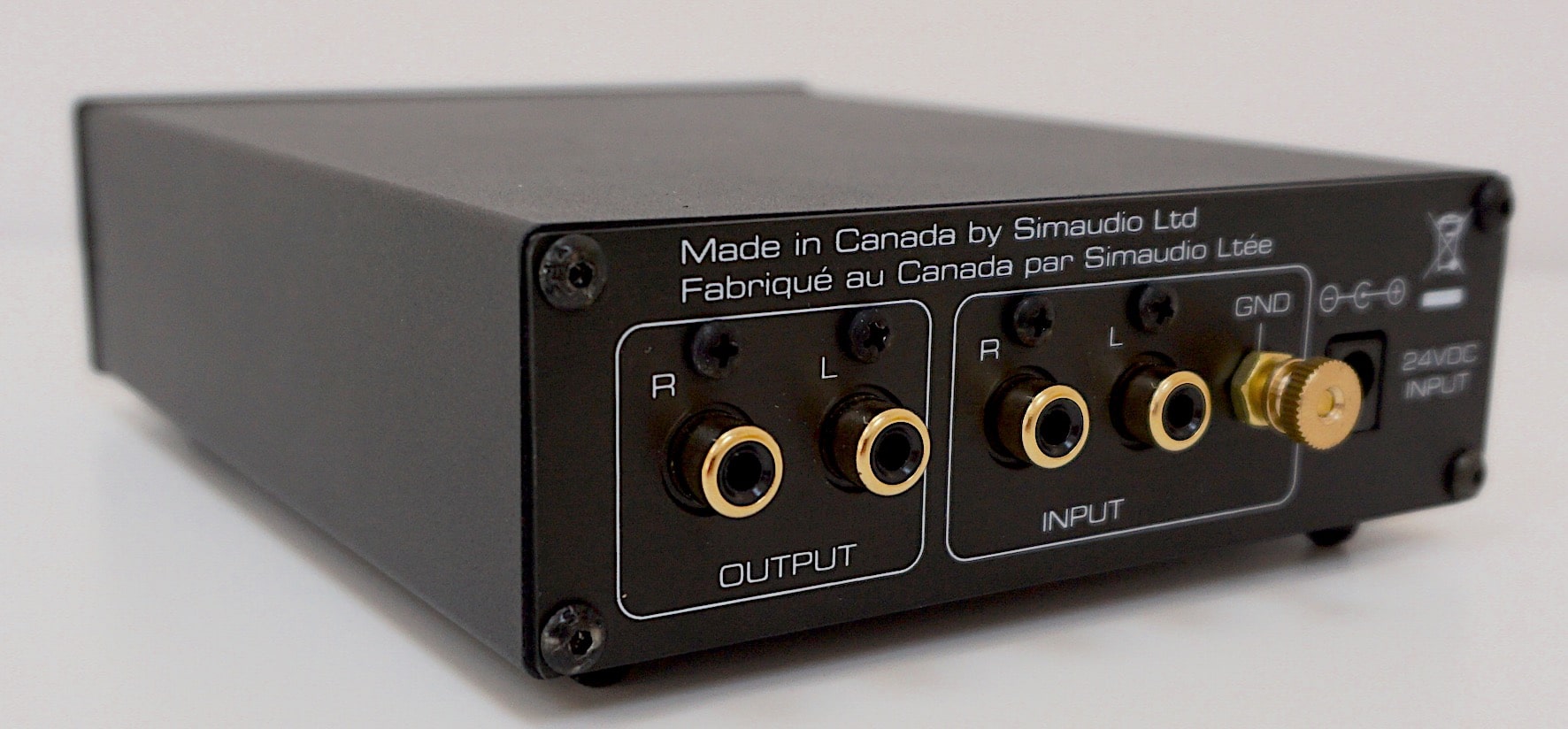
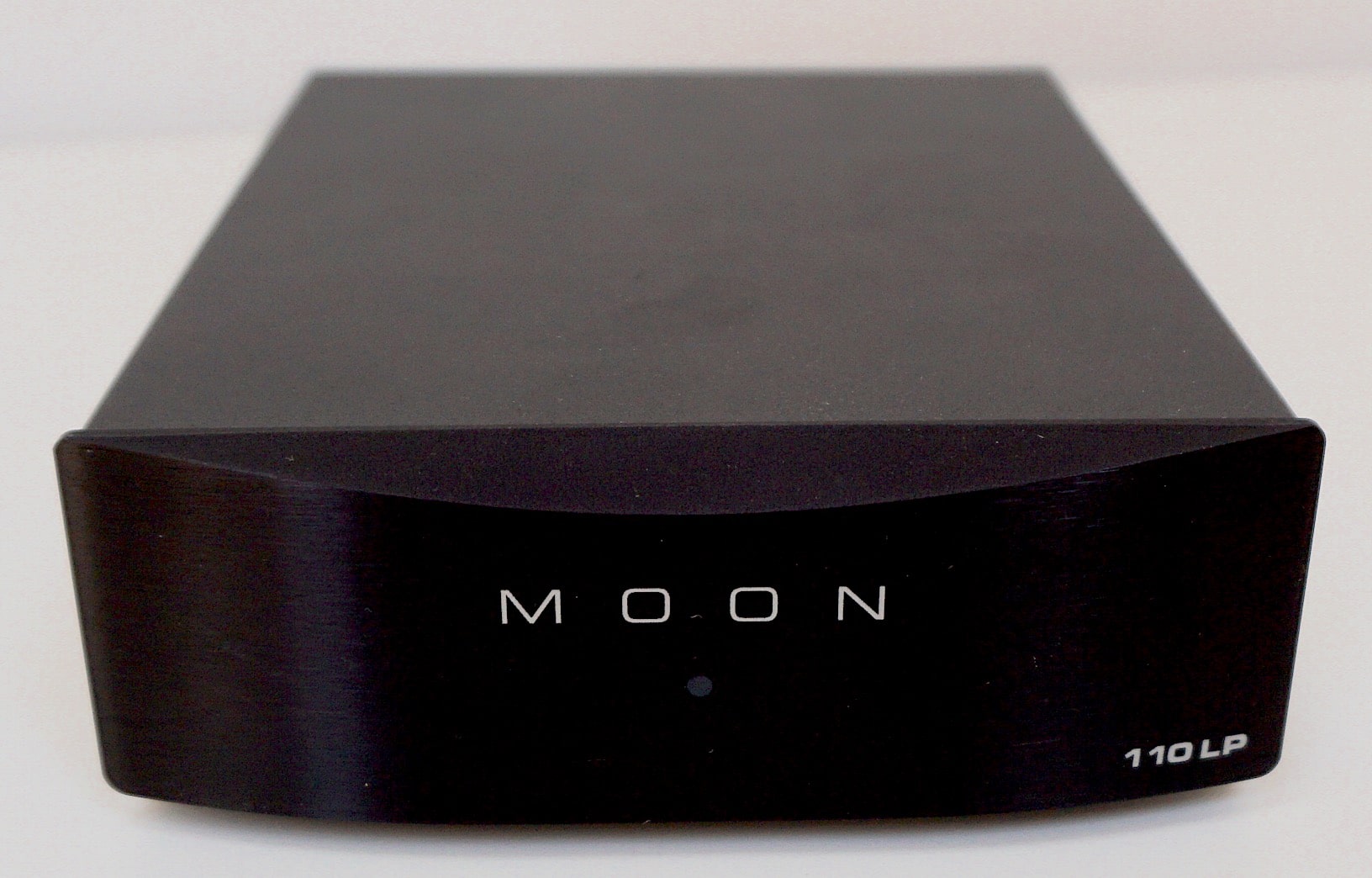



Good morning from Greece and thank you for the interesting and detailed reviews. By the way I feel that text reviews are more helpful, but I guess I am just getting older…
Currently my setup is Rega Brio, Rega Planar 3/Elys 2 and Schiit Mani. I have some hum problems with the Mani, but I would like an upgrade (more of a disease I guess). So, given budget restrictions (up to € 400 or I will get divorced!) should I invent on MM only, on MM/MC, or wait to increase budget? Are there any options at this price range that would be an upgrade (and not just a change) compared to Mani? Options I’ve identified (through internet) include Rega Fono MM mk3, Graham Slee Gram Amp 2 SE, Rothwell Simplex, but also Arcam rPhono and Lehmann Black Cube Statement.
I know that it is not possible for you to actually review all the above devices, but any input would be useful. Sorry for bombing you with so many questions. Be safe and well
Hi Yannis – which is why I try to keep a flow of both text and video, to offer that choice. For the current set up, the Moon is ideal and recommended and will be there when/if you upgrade your Rega and cart.
Thanks for the quick reply. Regarding the Moon I have to wait a little, to increase the available budget to about 550 € plus shipping (Moon is not available in Greece as far as I know). Not necessarily a big step but these are strange days
Hi Paul
I have had the Shiit mani for just over a year now…with goldring 1042 and nagaoka mp200. I‚Äôm looking to make an upgrade for under 1k. The moon has caught my attention, as has the ifi phono 2, both of which you‚Äôve reviewed. The Rega aria is still within my budget. Which shoukd I go for please….?
Another question…I notice that between tracks, my woofers are pulsing in and out quite slowly when the volume is high on some pressings. I‚Äôve heard of rumble filters…do any of these phono stages filter that out?
Many thanks
I’d go for the Moon. A great performer.
I would caution against rumble filters because they will filter out elements of music as well as sonic issues. The best bet is to get to the root of any sonic issue and correct that rather than apply an striking plaster over the problem.
Thanks Paul. Before I had chance to see your reply I was offered a fantastic deal on the Rega aria mk3 current model so I‚Äôve got that. I‚Äôm shocked at how much I have been missing with the budget phonostage. The aria is sounding so ‚Äòreal‚Äô if that makes sense. I don‚Äôt have the audiophile vocabulary (audiocabulary üòÇ) to describe it any better. It‚Äôs just sounds beautiful and 3 dimensional in a way I hadn‚Äôt expected. Thanks for your review of the moon though…it got me thinking about the importance of the phonostage. In addition…no need for a rumble filter…the woofers have stopped pulsing!
Good stuff – glad you found a deal on the Aria, Gary.
Hi Paul,
Which would give a better sound to my system, the moon phono stage or graham slee era gold v ?
Like the trilogy but think it would be wasted on my system.
Will I further improve my system if I replace the Chord Rumours 2 speaker cable with SIGNATURE??
System is-
Spendor A1
PRoject RPM5 WITH NEW Ortofon 2m Black
JVC amp
Thanks
Regards
Neil
I think I’ve already addressed the Slee phono thing before via your earlier question and ‘yes’ on the Signature.
Hi Paul,
Thanks for all your highly informative reviews. Very much appreciated. I am considering this, the Moon 110LP V2 and the MoFi UltraPhono. Moving in a different direction, I am also considering a Rothwell Head-amp or one of their Step-up transformers. Which way do you think I should jump?
Thanks again, for all you do.
Hi Jake
I have yet to review MoFi’s hardware – despite my requests…and they agreeing to send…and nothing turning up…and me asking again…[repeat] But I do hear good things about them. I do know the Moon offers tremendous value for money. It punches way over its weight.
Many thanks. Much appreciated.
I’m considering this phono stage as a partner for my NAD C558 with the stock OM10 cartridge. One of the things I’ve noticed about records is how far the volume dial on the amplifier has to go up compared to CDs (a CD rarely has to go above 9 o’clock while a record often has to go up to 11 for an immersive sound). Will the gain settings on this phono stage help with that?
I’m also thinking about cartridge upgrades for the NAD. Is there any particular reason why you recommend the Goldring E3 over the more common Ortofon 2Ms? Are the 2Ms unsuitable for this TT or is the Goldring just the better tool for the job?
Also, would the OM20 be a worthwhile upgrade to the OM10? It’s slightly more expensive than the E3 but has the benefit of being a quick stylus swap rather than a full cartridge replacement.
Hi Simon – maybe, maybe not. Sometimes the high volume you hear may be down to more high-frequency noise from the CD player or the mastering of the CD itself or one of many other reasons.
The E3 is sonically superior to the 2M Red, although the Red is an excellent cart. If you choose the latter you won’t be disappointed.
Sure and OM20 would be fine too. I’d still go for the E3 but the OM20 is certainly an option if you feel more comfortable with that choice.
Hi Paul,
I saw your video “BEGINNER’S GUIDE – PHONO AMPLIFIERS FOR ALL”. Despite your explanations, I cannot understand the difference between phono amplifier and phono preamplifier. I take the example of the Moon 110LP V2. You say it’s an phono amplifier. However, it is very often referred to as a phono preamplifier.
1 / What is the real difference between a phono amplifier and a phono preamplifier?
2 / Where do you plug the phono amplifier Into an integrated amplifier ? On phono input ? elsewhere ?
Thanks again for your excellent work.
Dan
Hi Dan – there is no difference, that was my point. We’re talking semantics. I think the term ‘phono preamplifier’ is confusing and you’re making my point for me on that score 🙂
To connect a phono amplifier, plug it into any inputs on the rear of your integrated amplifier (not the built-in Phono sockets, if the amplifier has those, though).
And thanks for your kind comments.
Hi Paul, your videos and reviews are excellent, I thoroughly enjoy them. I am considering a phono amp but unsure of the benefits with my set up. I have a Technics SLBD20B TT with an AT85EP P mount cartridge and a Yamaha RN803D and currently using the phono amp on the Yamaha. Would I get any benefits with a separate phono amp and if so what would these be and what would be the level of phono amp to look at? Many thanks!
You’ve got the right idea, Dave but, if you’re looking at upgrades, I would encourage you to jiggle the order of your purchases. I’d upgrade your turntable first, then get an external phono amp.
Thank you Paul. I was thinking that maybe should be an option first.
Hi Paul, I was considering the Pro-ject Debut Evo based on your excellent review. What would be your suggestion in terms of a Phono amp which would do justice to this TT? For example should I be looking to spend the same again as the TT or would a lower cost example suffice? I note that Pro-ject do some Phono amplifiers. Many thanks!
Hi Dave – sure, the Moon would work well with the EVO. I wouldn’t be afraid of spending out on a phono amp. It’s an essential component that would partner well.
Hi Paul! I’m very late to the party so I hope you see this. I liked what you said about 3d soundstage and would like to know what cartridge you were using. I know that my turntable may affect the effect:-) I have a Technics sl1500c. We appreciate you!
Well that’s very kind of you, James. Thank you. Cartridge? I think it was a 2M Black from Ortofon but any quality cartridge will benefit from the Moon. Depends on your budget.